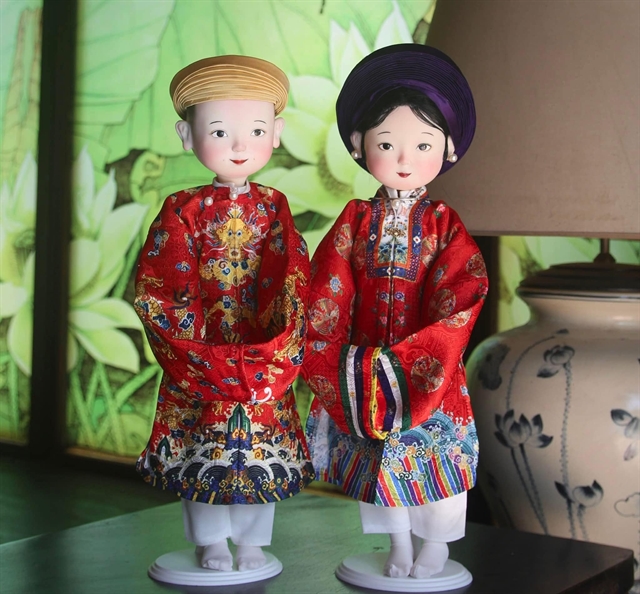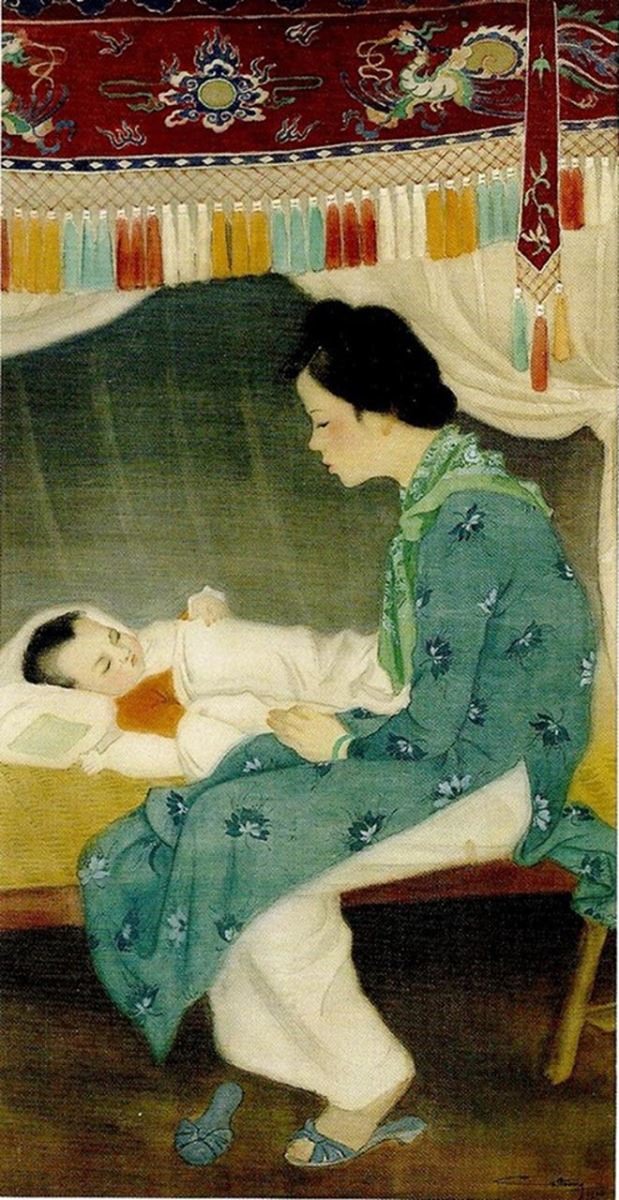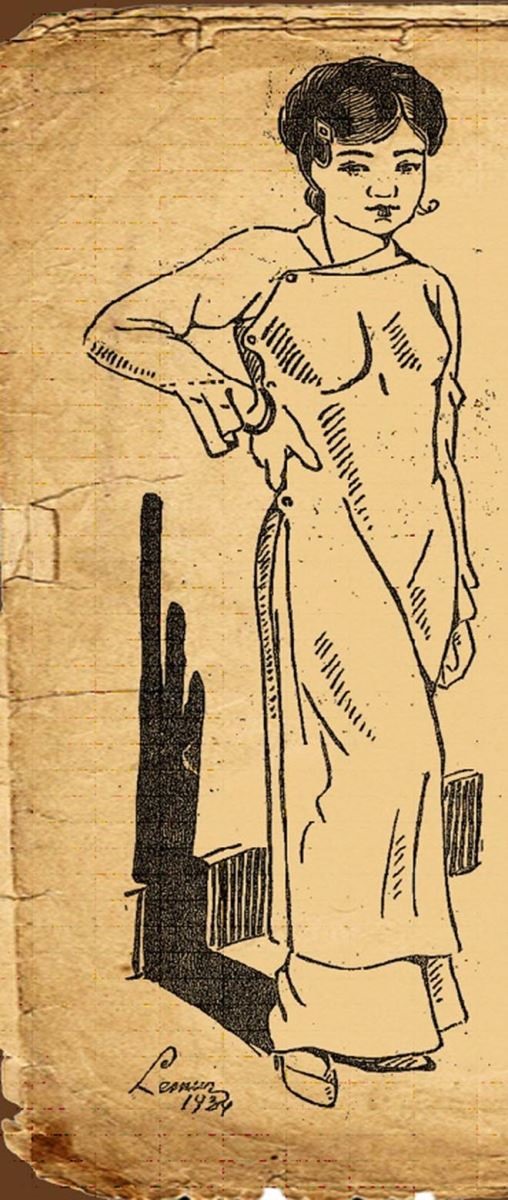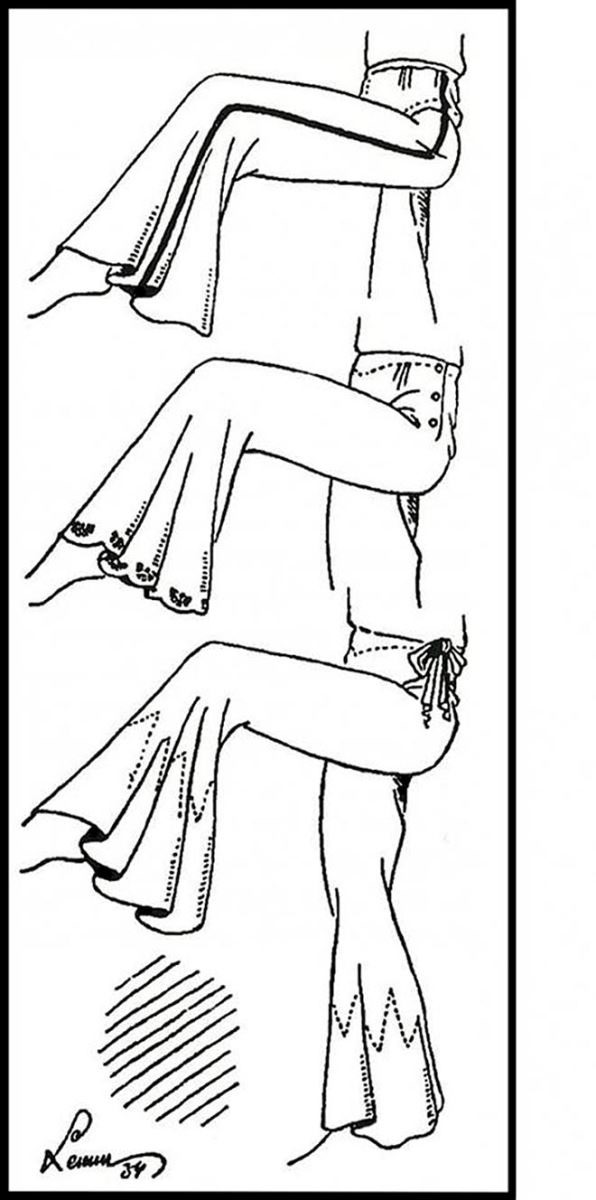 Features
Features

Many people agree that the áo dài tân thời (modern traditional long dress) – Le Mur long dress designed by painter Nguyễn Cát Tường (1912-1946) is symbolic of Vietnamese women.
 |
| Family: A silk painting by painter Cát Tường featuring his wife Nguyễn thị Nội and their first daughter Nguyễn Cát Minh Nguyệt in 1940. Photos thethaovanhoa.vn |
By Trần Hoàng Nam
Many people agree that the áo dài tân thời (modern traditional long dress) or Le Mur long dress designed by painter Nguyễn Cát Tường (1912-1946) is symbolic of Vietnamese women.
Though it appeared rather late in history, in 1934, it rapidly spread throughout Việt Nam and the whole of Indochina.
A reference book titled Áo Dài Le Mur và Bối Cảnh Phong Hóa & Ngày Nay (Le Mur Long Dress and Its Birth through Phong Hóa and Ngày Nay Newspapers) by Phạm Thảo Nguyên explores the fashion icon. The book will be released soon by Khai Tâm Books and Hồng Đức Publishers.
The book includes three main parts. The first part of 60 pages is about painter Tường (literally translated as Le Mur in French).
The second part talks about the Phong Hóa and Ngày Nay newspapers to give some background on the birth of the modern áo dài.
The third part includes illustrations, sketches and the front pages of newspapers capturing the dress.
Dedication to writer Nhất Linh
On February 11, 1934, editor-in-chief Nhất Linh of the Phong Hóa newspaper opened a new column in its spring edition titled Vẻ Đẹp Riêng (Special Beauty) aimed at a female audience.
Tường, a graduate from the Indochina Fine Arts College, wrote the column.
“Loving beauty is a common characteristic among people,” he wrote in the spring edition. “The fair sex has been offered beauty and gentleness by nature. So they tend to make up to make them more beautiful for themselves, for other people, as a respect to all people. Women’s value and happiness is making up and beautification.”
In 1936, Phong Hóa newspaper was renamed Ngày Nay and Tường continued to host the column advising women on fashion and make-up.
In 1937, Tường and his wife opened a tailor’s shop named Lemur Tailor.
In Phong Hóa’s 90th edition issued on March 23, 1934, Tường introduced the first design of the modern áo dài.
 |
| Cultural symbol: Cover of the book by Phạm Thảo Nguyên Lemur áo dài on Newspaper Phong Hóa and Ngày Nay. |
 |
| Modern dress: A Lemur áo dài design by Cát Tường printed on Phong Hóa newspaper edition 90 on March 23, 1934. |
 |
| Big step: Cát Tường’s pants designs were a revolution in Vietnamese fashion history. Photo tienphong.vn |
 |
| Influential: Painter Cát Tường (1912-1946). Photo tienphong.vn |
Some materials have been kept for the past 60 years by the painter’s son, Nguyễn Trọng Hiền. The Vietnamese traditional long dress from the Nguyễn dynasty, in the late 19th century and early 20th century, covered the whole body carefully like the outer dress of today’s Buddhist monks.
The design of the dress is the same, straight up and down the body. The dress consists of two panels: front and back.
On his first áo dài design published in Phong Hóa, painter Tường made a change at the torso. The long dress was a little tighter here, enhancing the wearer’s breasts, which is a feature of western fine art.
Painter Tường also came to order a special kind of bras for áo dài wearers at Cự Chung shop on Hàng Bông Street, which specialised in producing coats and swimsuits.
This kind of bra is the first made-in-Việt Nam produced in 1935.
Vietnamese women were more confident to wear the bras with modern áo dài in public.
Not only dress, but also pants
“If I say this, few people will believe me,” wrote Tường in Phong Hóa’s 89th edition. “Another important thing in women’s costumes is the pants.”
He suggested three new designs of pants: 1. With waistband tied on the side, may be closed with a press stud; 2. With open space in the bottom, tied with buttons like on men’s trousers; 3. Pants with bell-bottoms, tighter above the knees, easing the wearer’s movements.
After publishing all his modern designs of áo dài in the newspaper, in 1935, Tường travelled throughout the country to introduce his designs to women.
In Huế, he met some members of the royal family and was invited to design a collection of áo dài Le Mur for the Queen.
He then travelled to the south to draw áo dài for various cải lương (reformed opera) artists including noted artist Phùng Há.
In 2013, Tường was named in Japan’s Dictionary of World Great Names as a painter and a modern fashion designer.
Hiền also revealed that in December 1946, when all Hanoians evacuated the city to the countryside to join the war of resistance against the French invaders, his wife nearly reached her due day to give birth to their child, painter Tường returned home to take some medicine and clothes for his wife and their children. But he never met his family again.
Hiền also said his father not only designed fashion and accessories for women, he also made designs for bicycles, created wooden items and toys for children. He also encouraged friends to open barber’s shops with hot shower services for men. He also taught painting at the Thăng Long Private Fine Arts School and joined various charity works.
Designer Sỹ Hoàng, who specialises in designing áo dài in HCM City, commented that Nguyên’s book was great.
“It’s not only a book on certain historical people,” he said. “It’s like a historical book on áo dài in Viet Nam at that time as a talented person’s fate associated with cloth and silk – a beautiful cultural symbol of Vietnamese people.” VNS
Various documents say initially, the French opened the Fine Arts College of Indochina to train workers for carving, painting, drawing and decorating furniture and houses for them. Yet, Principal Victor Tadieur discovered some talents among students. He tried to teach them oil-on-canvas painting and western fine arts.
The trial class on western fine arts in 1929 gathered the four best students of the courses 1, 2, 3 and 4 namely Lê Phổ (1907-2001), Tô Ngọc Vân (1906-1954), Lê Thị Lựu (1911-1988) and Nguyễn Cát Tường (1912-1946).




